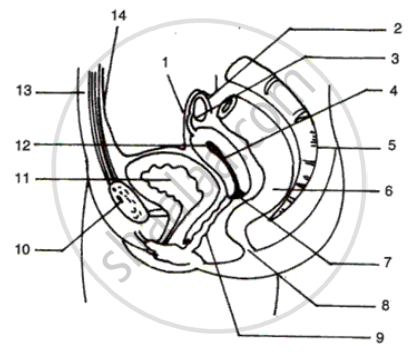Advertisements
Advertisements
Questions
Describe the function of placenta.
State function of placenta in human female reproductive.
Solution 1
Placenta is the connecting link between the mother's body and the baby. It is a disc embedded in the uterine wall. This special tissue contains villi on the embryo’s side of the tissue and on the mother’s side are blood spaces, which surround the villi. Placenta provides a large surface area for glucose and oxygen to pass from the mother to the baby. The developing embryo generates certain waste substances that can be removed through placenta.
Solution 2
Function of Placenta:-
The exchange of materials between the mother’s blood and the blood of foetus takes place through placenta. It serves as a nutritive, respiratory and excretory organ of the foetus.
Solution 3
The embryo gets its nutrition inside the uterus with the help of a special tissue, called placenta. Placenta is a disc of specialised tissue embedded in the uterine wall and serves as the connecting link between the mother's body and the baby. It contains blood spaces on the mother's side and thousands of villi (small projections) on the foetal side that provide a large surface area required for the exchange of nutrients and oxygen between the mother and the foetus. The wastes produced by the foetus are also removed through the placenta. It also functions as an endocrine gland and secretes hormones necessary for maintaining pregnancy
APPEARS IN
RELATED QUESTIONS
Explain the process of birth in human beings.
What are the functions of testes in the human male reproductive system?
Write the function of the following part in a human female reproductive system:
Uterus
State the main function of the Sperm duct.
Which part of the human body passes sperms from a man to a woman?
Where in the human body does an ovum get fertilised?
Which among the following are not the functions of testes at puberty?
(i) formation of germ cells
(ii) secretion of testosterone
(iii) development of the placenta
(iv) secretion of estrogen
Diagram shows the reproductive system of female human beings:
(i) Name the parts numbered 1 to 14.
(ii) Normally, after how many days does an ovary release an egg?
(iii) Where are the sperms released during coitus?
(iv) What is the role of sperms after their ejaculation in vagina?
(v) What is the function of the organ numbered 5?
(vi) What is the gestation period in human?

The living organisms can be unexceptionally distinguished from the non-living things on the basis of their ability for ______.
Distinguish between Vasa efferentia and Vasa deferentia.
